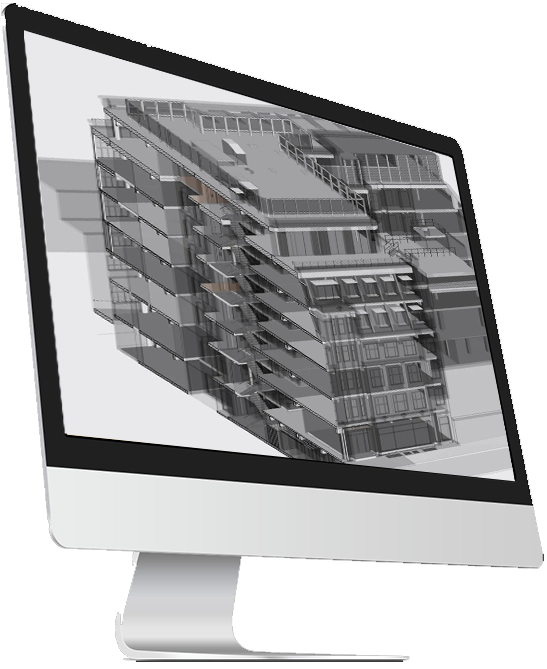Knowledge Base
Understanding
the Level of Detail in a BIM Model
Providing flexibility by offering five different building output options in your 3D model ensures you have the data needed to make the most informed decision.
What is a Level of Detail (LOD)?
Level of Detail (LOD) defines the content or information of a physical space. This information is what will ultimately make up the Building Information Model (BIM).
The LOD refers to two elements: the geometry or visual representation of a project, and the related metadata. The two elements together will allow for a complete digital twin of the space.
Here are three examples of how professionals will require different LODs in order to provide the specific work related to their job.

Architects and designers
Architects and designers will rely on Architecture LODs in order to work within the existing walls of a space.
Asset managers
Asset managers could benefit from a detailed MEP LOD in order to track the aging assets and other various FFE to manage capital expenditures.
Property managers
Property managers can inventory and code building elements and complete the building records for support and maintenance.
The 5 Levels of Detail (LOD)
Architecture
Capture the fundamental components of the building’s internal structure, including walls, doors, stairs, and windows. This option provides you with a solid foundation to work with.
Architecture and Interior Furniture
Architecture and MEP
Architecture, MEP, and Interior Furniture
Architecture, Complex MEP, and Industrial Spaces
Why Should You Have Levels of Detail (Lod)?
LOD 100 (symbolic representation) – is the elementary model of the project and is represented graphically with a symbol or other generic and schematic representation;;
LOD 200 (generic system) – the model element is graphically represented within the model as a generic object with still approximate quantity, size, shape, position and orientation. Non-graphical information may also be attached to the geometric elements;
LOD 300 (specific system) – the model element is graphically represented within the model as a specific system, in which the object has specific quantities, dimensions, shapes, position and orientation. Non-graphic information is also linked to the geometric elements, which is more in-depth than the previous level;
LOD 400 (fabrication) – the model element is graphically represented within the model as a specific system, in which the object has specific dimensions, shape, position, quantity and orientation with further details for its fabrication, assembly or installation. More in-depth non-graphical information is linked to the geometric elements than in the previous level;
LOD 500 (verified representation – as built) – the model element is a verified representation on site in terms of size, shape, position, quantity and orientation. Definitive non-graphical information is linked to the geometric elements. .



Dealing with a challenging situation with your business?
We can put you on the right path towards success. Share your real estate marketing ideas and goals. We have the right plan, products, and service that is ready for you to implement.
Contact Us
If you need to reach us, please call or text us at (917) 420-0065.






